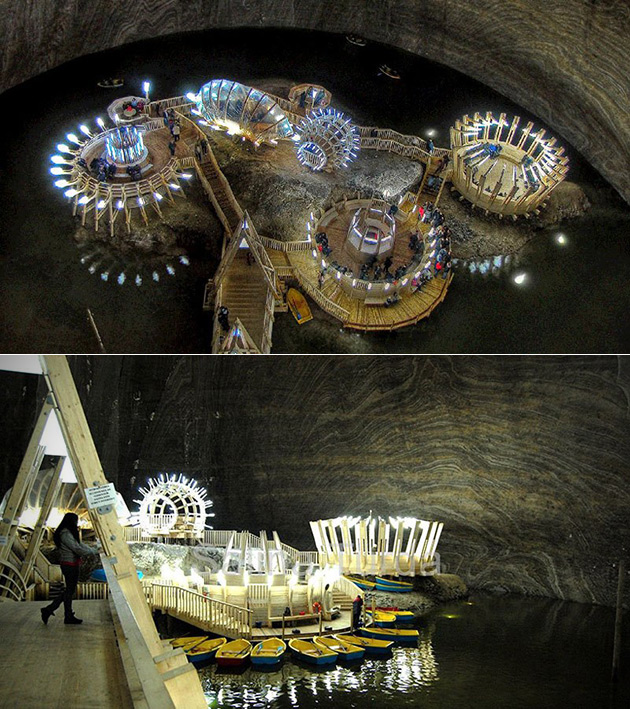
Here’s another look at Salina Turda, a salt mine located in the Durgau-Valea Sarata area of Turda, the second largest city in Cluj County, Romania. Salt was first extracted here during the antiquity and the mine continuously produced table salt from the Middle Ages (the mine being first mentioned in 1075) to the early 20th century (1932). The images above show the Terezia mine, which boasts a “cascade of salt”, an underground lake, stalactites and salt efflorescences complete the inert equilibrium of the giant bell. The underground lake is between 0.5 and 8 m deep and is extended on about 80% of the operating room hearth area. In the center of the lake there is an island formed from residual salt deposited here after 1880, the year when salt mining ended in this room. Click here for more pictures of Salina Turda. Continue reading for another video tour and more information.
The first document that speaks explicitly about the existence of a salt mine in Turda dates from May 1, 1271, being issued by the Hungarian chancellery. Documents reserved from the thirteenth and fourteenth centuries that refer to the Turda salt mines mention that salines were arranged in Băile Sărate microdepression and on the south-eastern slope of the Valea Sărată. Operating rooms were placed on the sites of current salt lakes from the perimeters mentioned above. In the seventeenth century has begun first salt mining works on the north-western slope of Valea Valea Sărată, evidenced by shafts in the dome of Terezia room. In a short time is open the Sfantul Anton mine, perimeter where the mining activity continues until the first half of the twentieth century.
